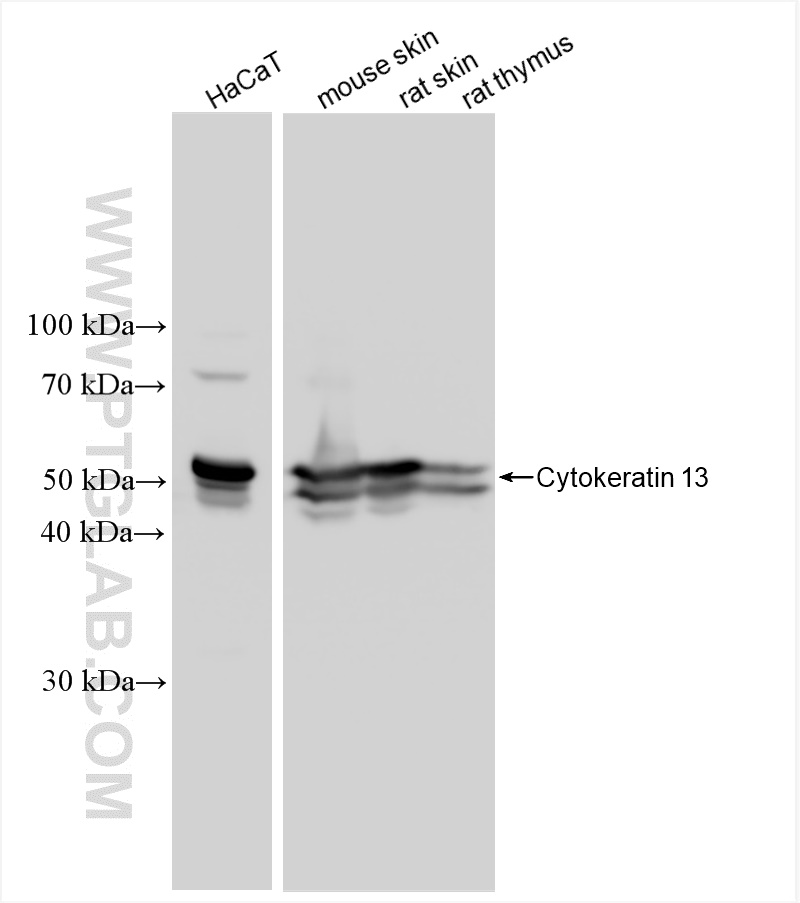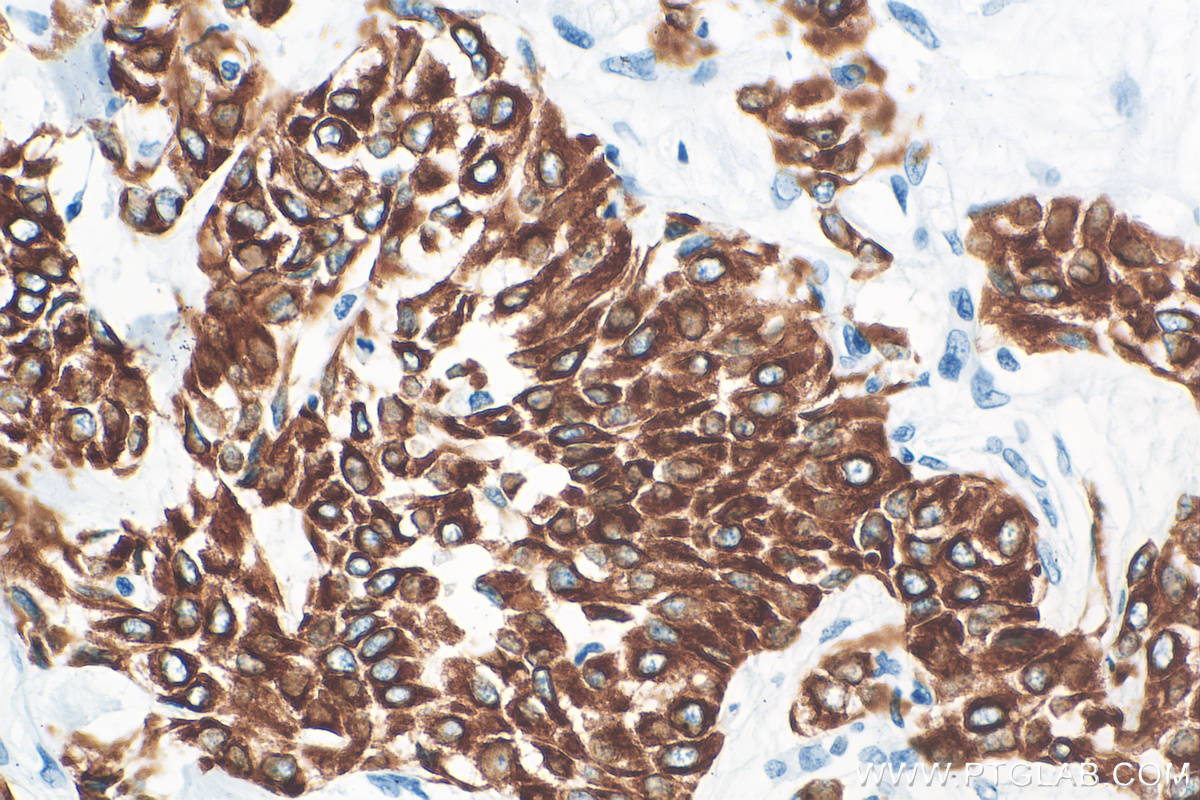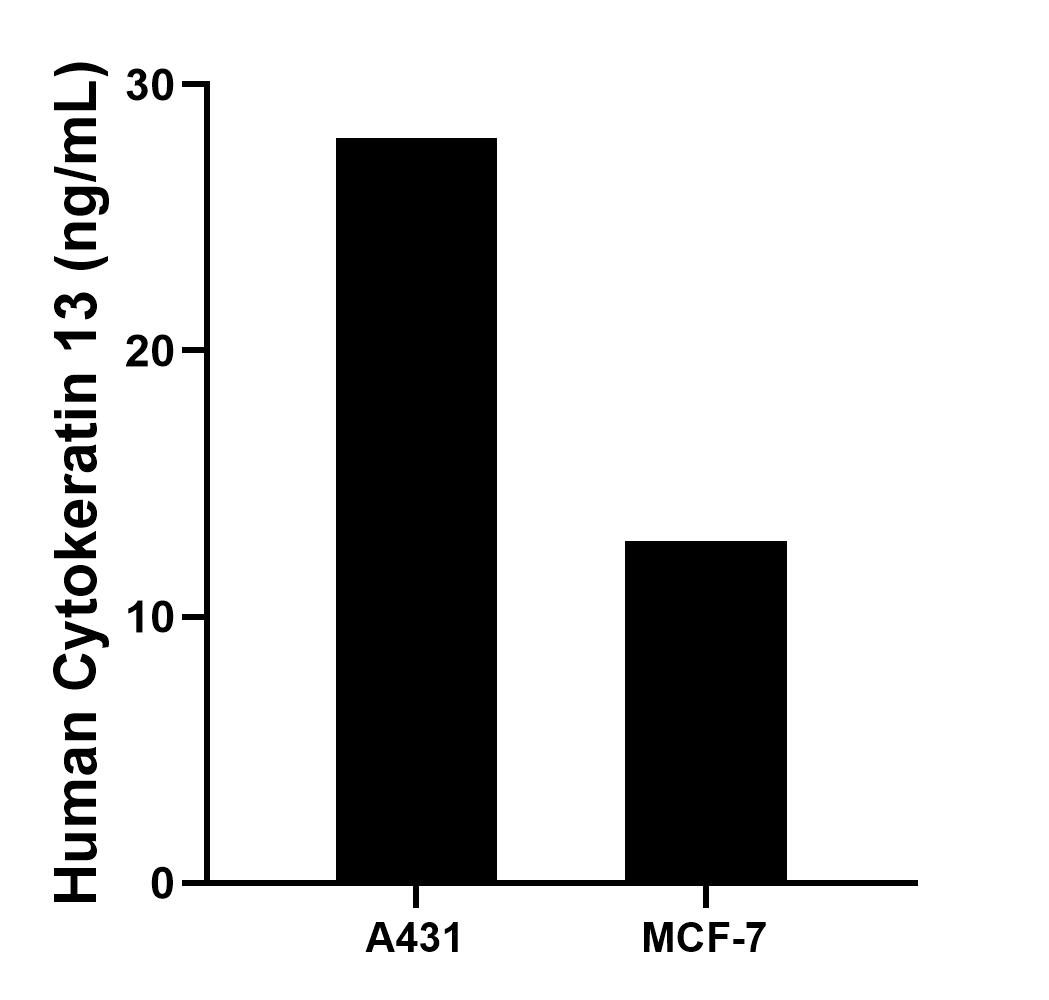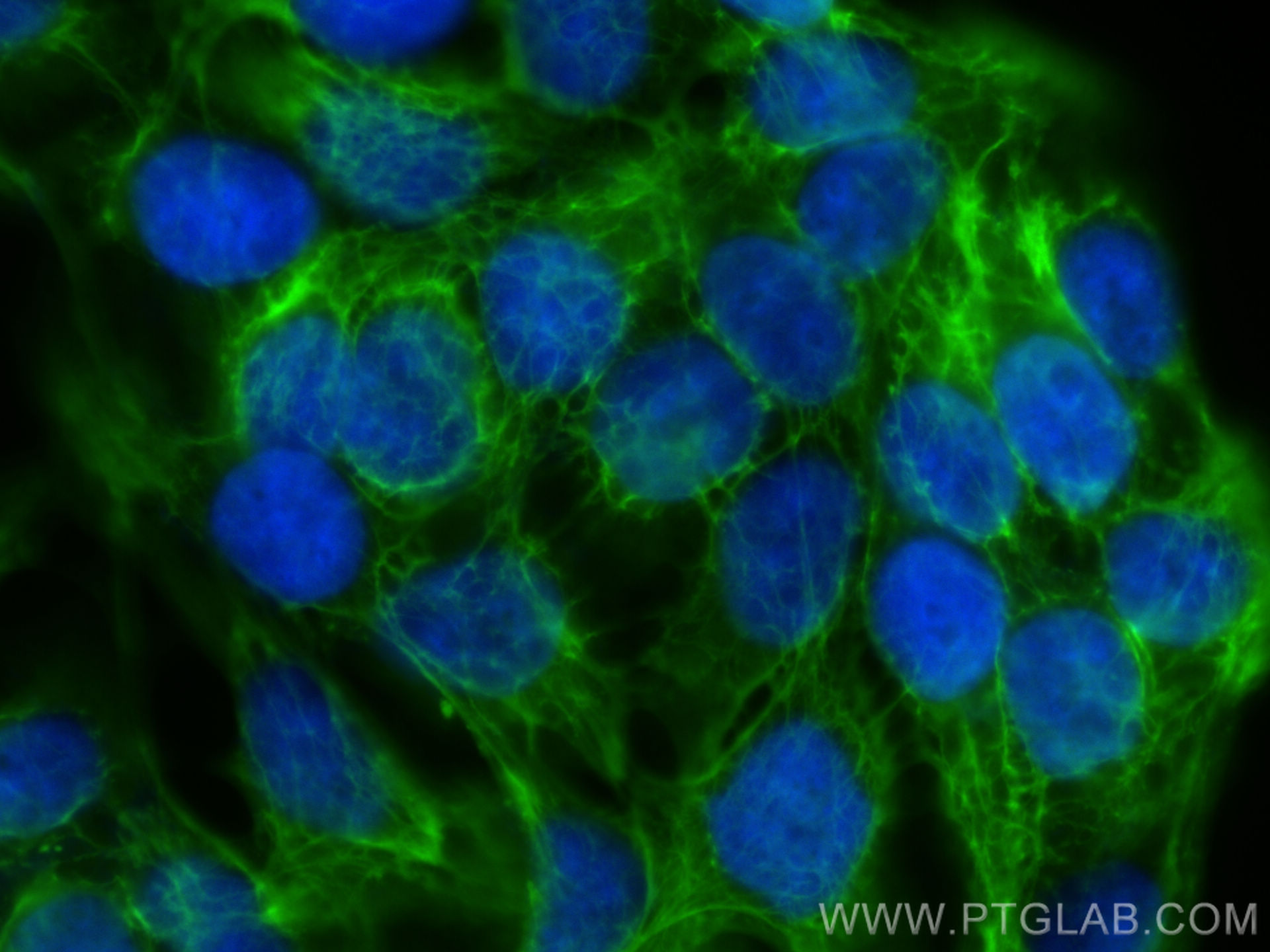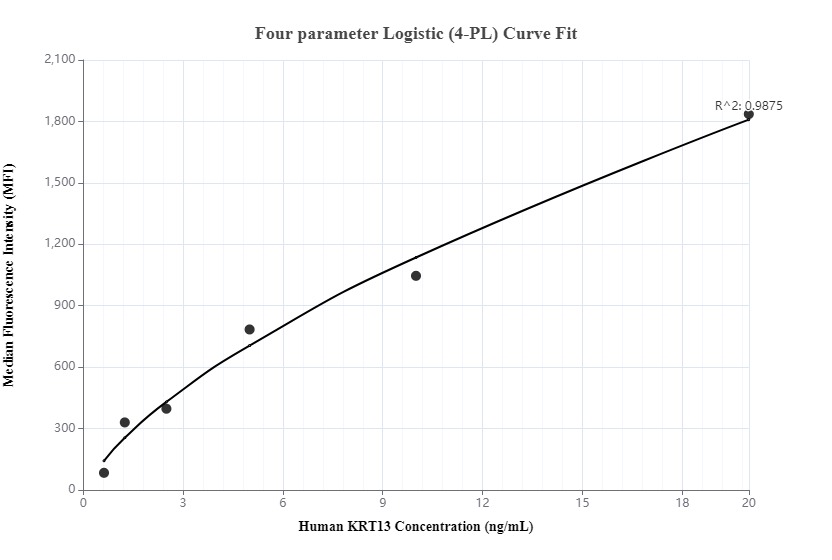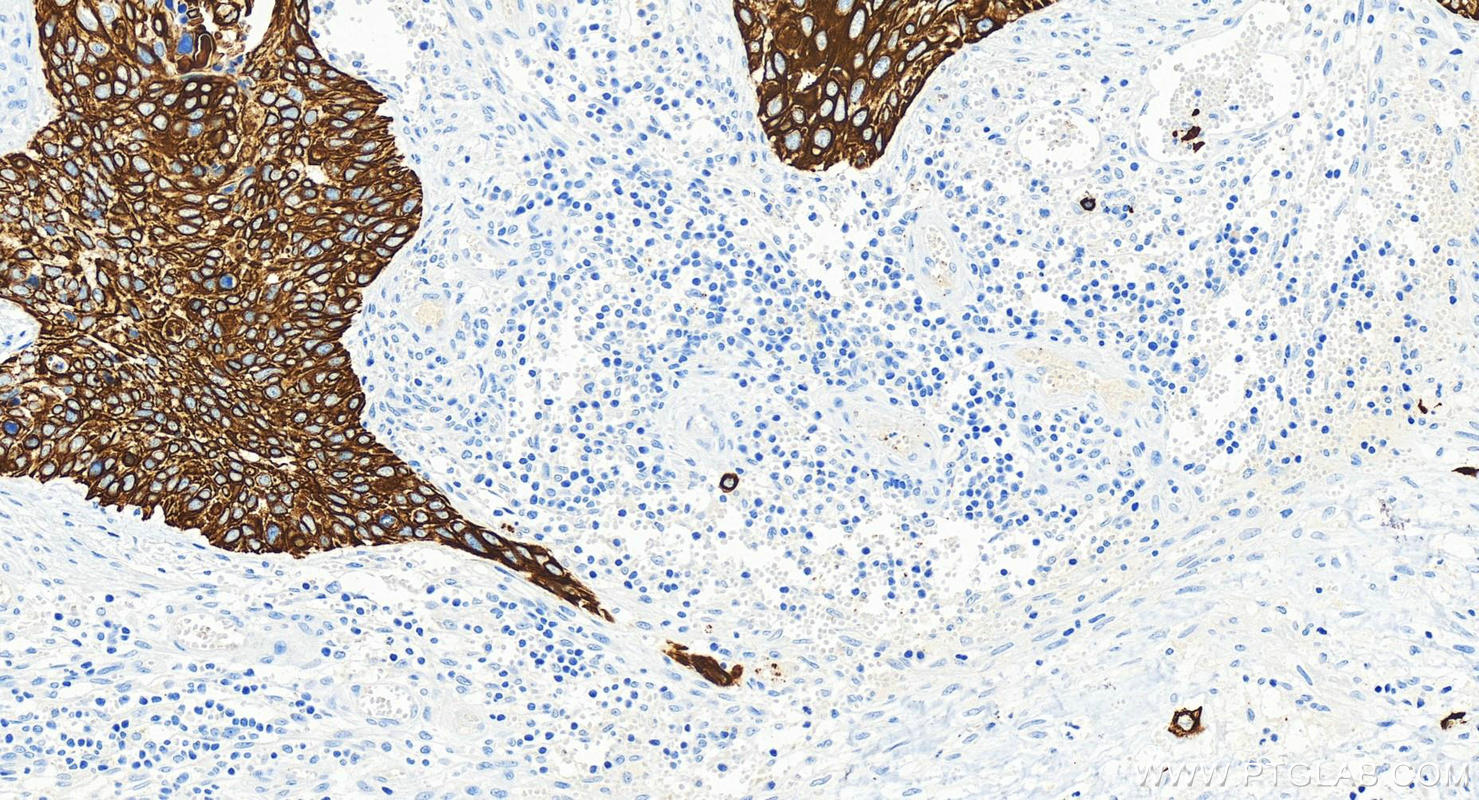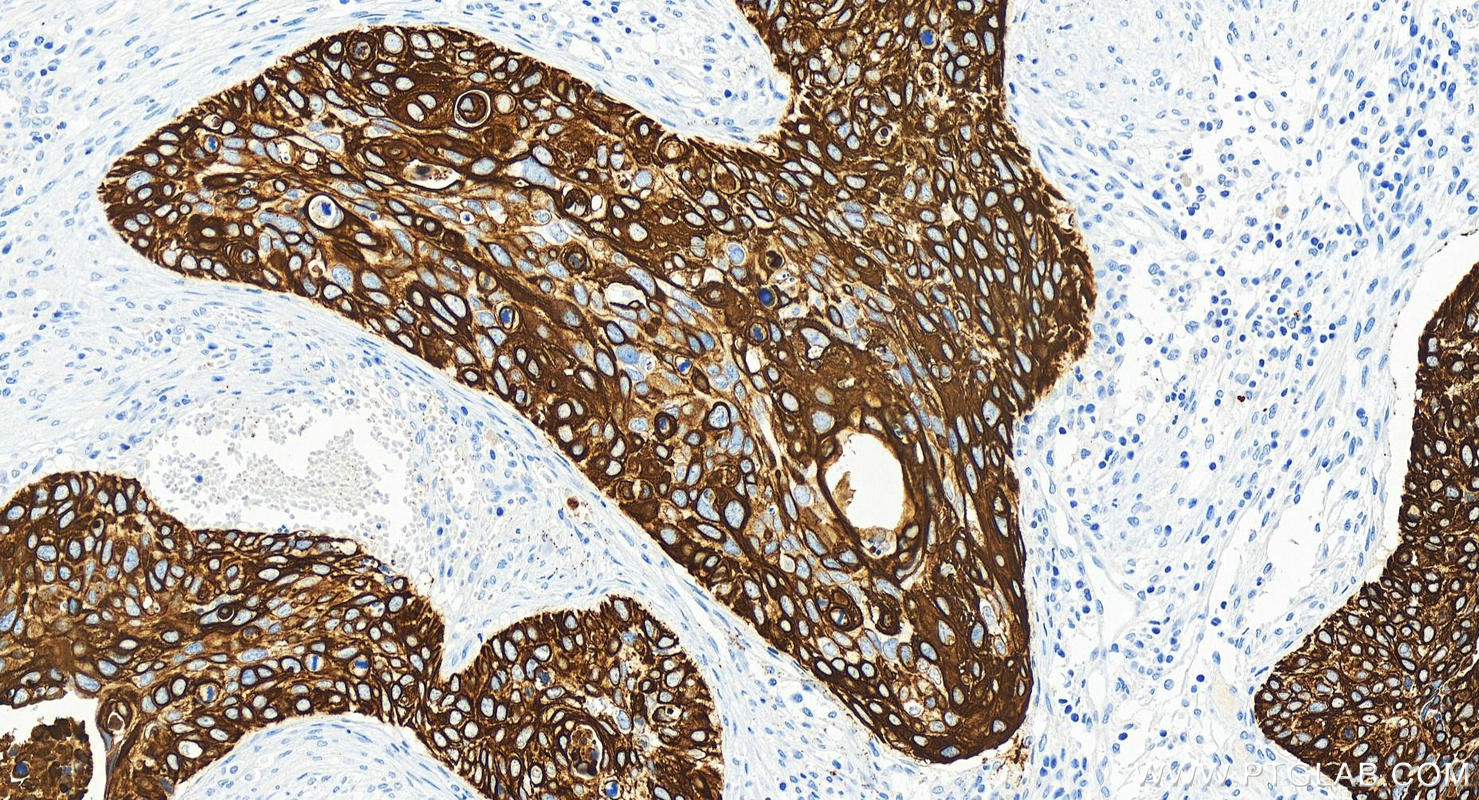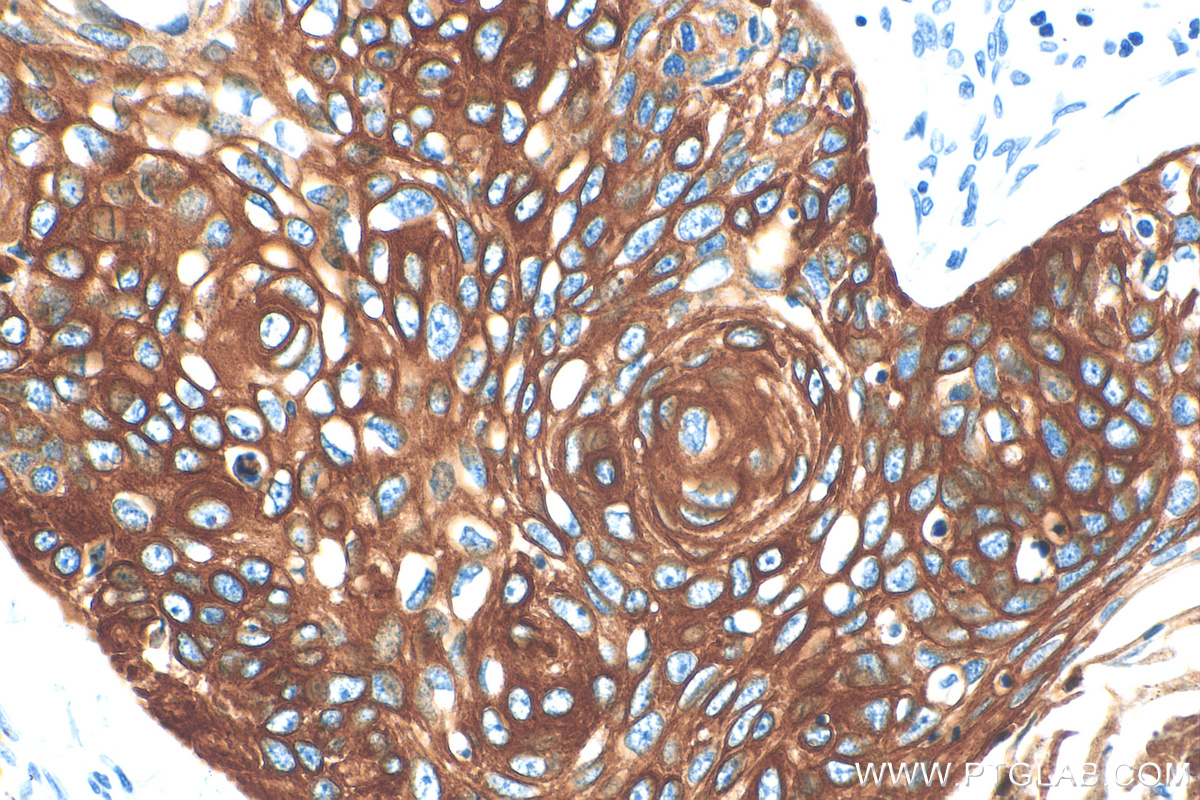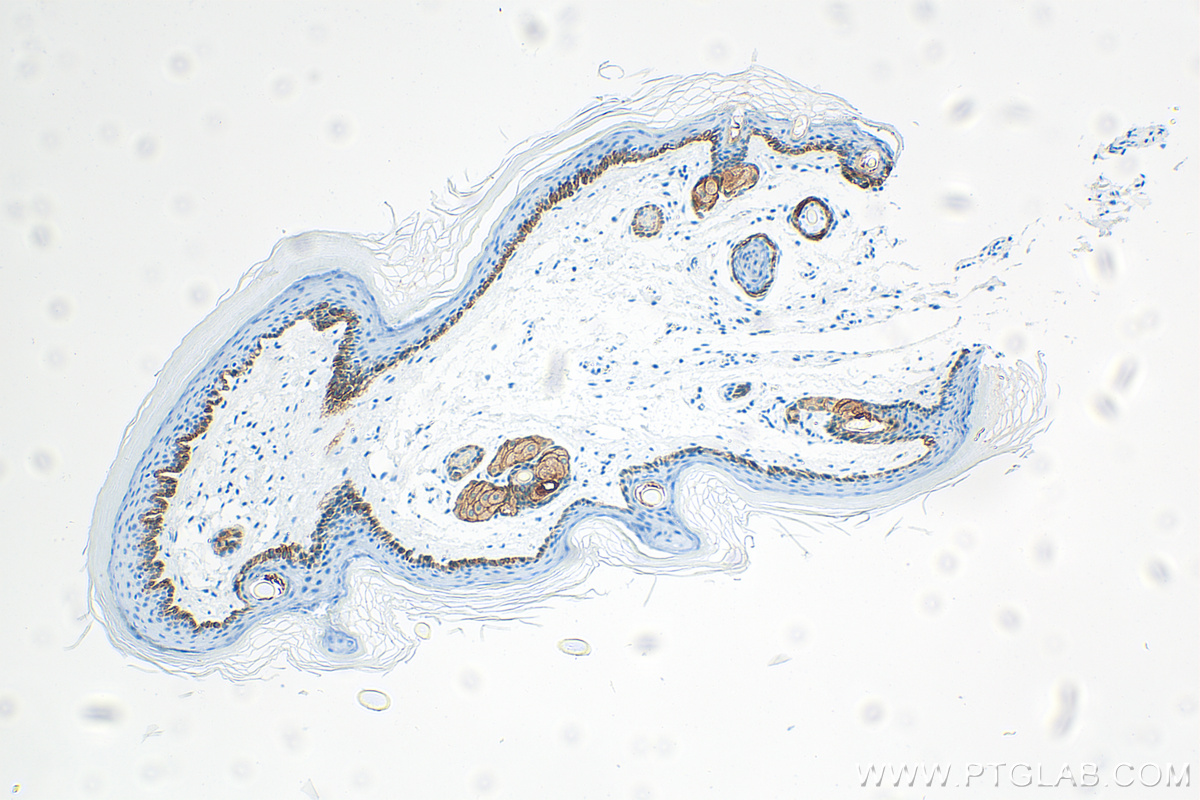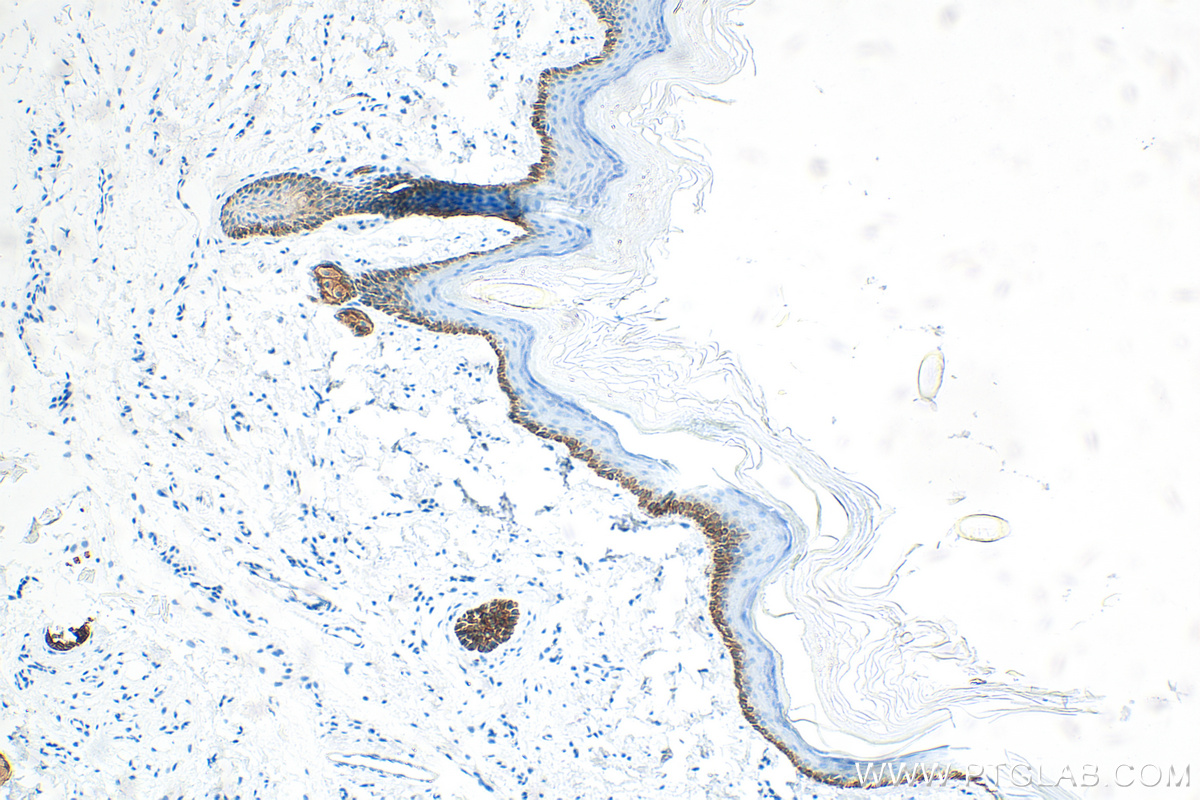验证数据展示
产品信息
83058-1-PBS targets Cytokeratin 13 as part of a matched antibody pair:
MP00074-1: 83058-1-PBS capture and 83058-3-PBS detection (validated in Cytometric bead array)
MP00074-2: 83058-1-PBS capture and 83058-5-PBS detection (validated in Sandwich ELISA)
Unconjugated rabbit recombinant monoclonal antibody in PBS only (BSA and azide free) storage buffer at a concentration of 1 mg/mL, ready for conjugation. Created using Proteintech’s proprietary in-house recombinant technology. Recombinant production enables unrivalled batch-to-batch consistency, easy scale-up, and future security of supply.
This conjugation ready format makes antibodies ideal for use in many applications including: ELISAs, multiplex assays requiring matched pairs, mass cytometry, and multiplex imaging applications.Antibody use should be optimized by the end user for each application and assay.
| 经测试应用 | WB, IHC, IF/ICC, Cytometric bead array, Sandwich ELISA, Indirect ELISA, Sample test Application Description |
| 经测试反应性 | human, mouse, rat |
| 免疫原 | Cytokeratin 13 fusion protein Ag0217 种属同源性预测 |
| 宿主/亚型 | Rabbit / IgG |
| 抗体类别 | Recombinant |
| 产品类型 | Antibody |
| 全称 | keratin 13 |
| 别名 | KRT13, Cytokeratin,Keratin, ck17, CK-13, CK13 |
| 计算分子量 | 50 kDa |
| 观测分子量 | 50 kDa |
| GenBank蛋白编号 | BC002661 |
| 基因名称 | Cytokeratin 13 |
| Gene ID (NCBI) | 3860 |
| 偶联类型 | Unconjugated |
| 形式 | Liquid |
| 纯化方式 | Protein A purification |
| UNIPROT ID | P13646 |
| 储存缓冲液 | 100% PBS pH 7.3 |
| 储存条件 | Store at -80°C. The product is shipped with ice packs. Upon receipt, store it immediately at -80°C |
背景介绍
Keratin 13 is a member of the keratin family. The keratins are intermediate filament proteins responsible for the structural integrity of epithelial cells and are subdivided into cytokeratins and hair keratins. Most of the type I cytokeratins consist of acidic proteins which are arranged in pairs of heterotypic keratin chains. This type I cytokeratin is paired with keratin 4 and expressed in the suprabasal layers of non-cornified stratified epithelia. Mutations in keratin 13 gene and keratin 4 have been associated with the autosomal dominant disorder White Sponge Nevus. The type I cytokeratins are clustered in a region of chromosome 17q21.2.
